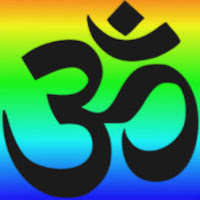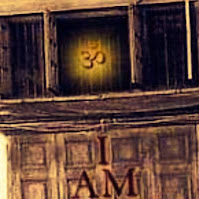Chandogya 6.1 (Sankara's comments in italics)
2. He, of twelve years age, after going to the teacher (and) having studied all the Vedas till the age of twenty-four years, returned conceited, proud of being a learned man, and immodest. To him the father said, '0 Svetaketu, 0 good looking one, now that you are conceited, proud of being a learned man, and immodest like this, did you ask about that instruction-
3. ‘Through which the unheard of becomes heard, the unthought of becomes thought of, the unknown becomes known?’ (Svetaketu asked,) ‘0 venerable sir, in what way is that instruction imparted?’
Even after studying all the Vedas, and even after knowing all other things that are to be known, a man indeed remains unfulfilled of his purpose till he does not know the reality of the Self. This is understood from the story.
4. ‘0 good looking one, as by knowing a lump of earth, all things made of earth become known: All transformation has speech as its basis, and it is name only. Earth as such is the reality.'
Which is that? It is vikarab, the transformation; which is niimadheyam, name only. The suffix dheyat is added after a word to mean the word (nama) itself. It is only a name dependent merely on speech. (Apart from that) there is no substance called transformation. In reality mrttikii iti, earth as such; eva satyam (is the thing that) truly exists.
7. These venerable teachers did not certainly know this. For, if they had known this, why should they not have told me? May yourself, venerable sir, tell me’ that.’ ‘0 good looking one, so be it’, said he.
Although any deficiency of a teacher should not be spoken of still, he did so for fear of being sent again to the teacher's house!
Chandogya 6.2
1.‘0 good looking one, in the beginning this was Existence alone, One only, without a second. With regard to that some say, “In the beginning this was non-existence alone, one only, without a second. From that non-existence issued existence.”
Sat, Existence; eva, alone: The word sat means mere Existence, a thing that is subtle, without distinction, all pervasive, one, taintless, partless, consciousness, which is known from all the The word eva is used for emphasis. What is that which is being detennined? This is being said: That which is idam, this, the universe which is perceived as a modification possessed of name, form, and movement; that lisft, was Existence alone. The word sat-eva is connected with lisit. When was all this Existence alone? This is being answered: Agre, in the beginning, before the creation of the universe.
2. He said, ‘0 good looking one, by what logic can existence verily come out of non-existence? But surely, o good looking one, in the beginning all this was Existence, One only, without a second.’
3. That Existence) saw, ‘I shall become many. I shall be born.’ That created fire. That fire saw, ‘I shall become many. I shall be born.’ That created water...
Tat, that Existence; aik$ata, saw, undertook the act of visualization. From this it follows that the cause of the world is not the Pradhana imagined by the Sarhkhyas, for they accept Pradhana to be insentient. But this Existence is conscious because of being the agent of visualization.
How did That visualize? This is being answered: 'Syam. I shall become; bahu. many. Prajayeya, I shall be born excellently'. like earth taking the shapes of pots etc. or ropes etc. taking the shapes of snake etc. imagined by the intellect.
Chandogya 6.3
2. That Deity which is such saw: ‘Let it be that now, by entering into these three gods, in the form of the soul of each individual being, I shall clearly manifest name and form.’
Chandogya 6.8
1.Uddalaka, son of Aruna, said to Svetaketu, his son, ‘0 good-looking one, learn from me about deep sleep. 0 good-looking one, when a man is spoken of as, “He sleeps”, then he becomes merged in Existence. He attains his own Self. Therefore they speak of him as, "he sleeps,” for he attains his own Self.’
The mind into which the supreme Deity has entered as the individual soul, like a man entering into a mirror in the form of a reflection, or like the sun etc. entering into water etc. that has been known as made up of food, and associated with speech and vital force made up of fire and water (respectively). The individual soul, in identification with that mind and staying in °it, becomes able to have such behaviours as thinking, seeing, hearing etc. and on the cessation of that attains its own nature as the Deity. This has been mentioned in another 'It thinks as it were, and shakes as it were. Being identified with dreams It transcends this world' (Br. IV.3.7)
Or svapniintam means the essential nature of dream. In that sense also the meaning is deep-sleep, which follows from the text, 'He attains his own Self. For the knowers of Brahman do not admit attainment of its own nature by the individual soul, in any state other than deep-sleep. Just as the reflection of a person in a mirror attains the person himself when the mirror is removed, in a similar way indeed, there (in the deep-sleep) when mind etc. cease functioning, that supreme Deity which, in the form of a conscious individual soul as Its reflection, had" entered into the mind for the manifestation of name and form, attains Its true nature by giving up Its appearance as the individual soul called the mind. So it is understood that deep-sleep itself is meant by the word svapniintam.
That this name is a secondary one is being shown by stating: When a person is spoken of as 'He sleeps', then, he bhavati, becomes; sampannaJ;z, identified; satii, with Existence; i.e. he becomes united with, identified with the Deity under discussion, refelTed to by the word Existence. Having discarded the nature of the individual soul which has entered into the mind and which is produced from the contact with the mind etc., apftaJ;z bhavati, he attains; svam, his own self, his nature as Existence which is the ultimate Reality. Tasmat, therefore; the common people iicak$ate, speak of; enam, this one; as svapiti, 'He sleeps' (lit. 'he is in his own self); hi, because; apftaJ;z bhavati, he attains; svam, his own Self. The idea is that, even from the fact of the secondary name (svapiti) being well-known, it understood that he attains his own Self.
2. ‘As a bird bound to a string, flying in all directions and failing to get an abode anywhere else, repairs to the place of bondage alone, in this very way indeed, 0 good-looking one, that mind, flying in all directions and failing to get an abode anywhere else, resorts to the vital force itself, for, 0 good-looking one, the mind is bound to the vital force.’
6. Where can be the root of that apart from being in water? 0 good-looking one, through water which is the sprout, understand fire as the root. 0 good-looking one, through fire which is the sprout understand Existence as the root. 0 good-looking one, all these beings have Existence as their root. Existence is their abode. Existence is their place of merger. 0 good-looking one, as to how each one of these three gods becomes three-fold and three-fold after coming in contact with a person, has already been stated earlier. 0 good-looking one, of this person when he departs, (the organ of) speech is withdrawn into the mind, mind into the vital force, vital force into the fire, and fire into the supreme Deity.
7. ‘That which is this subtle essence, all this has got That as the Self. That is Truth. That is the Self. Thou art That, 0 Svetaketu.’ ‘May the venerable sir explain to me again.’ He said, ‘Let it be so, 0 good-looking one.’
Sa/:l. ya/:l., that which has been spoken of as Existence; is efa/:l., this; a1)imii, subtle essence, the Source of the universe. Sarvam, all, idam, this; aitadiitmyam, has got That as the Self. All that has got this Existence as its Self is etadiitmii. The state. of having That as the Self is aitadiitmyam. This whole universe has become possessed of a Self through this Self which is called Existence; it has no other Self which is subject to transmigration. This follows from other texts such as, 'There is no other hearer but This, no other thinker but This' (Sr. III.8.ll). And Self through which all this universe becomes possessed of its Self (Existence), tat, That itself is the source called Existence; satyam, the Truth, the supreme Reality. that indeed; is atma, the Self of the world, its inmost essence, its quintessence, its very reality, because the word Self, when not preceded by any other word, conventionally denotes the inmost Self, like the conventional words cow etc. Hence tvam, thou; asi, art; tat, that Existence; svetaketo, 0 Svetaketu.












































